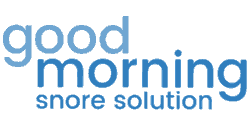
Tongue Stabilization - What Is It?
September 20, 2022 3 min read
What Is Tongue Stabilization in the Treatment of Snoring?
For most people, snoring is just an occasional nuisance. But for up to 36% of all adults, snoring is so frequent and loud that it interferes with their quality of their and their loved one's sleep. If that’s you, then you’re probably looking for solutions for your snore problem and came across tongue stabilization as an option. Here is everything you need to know about this popular snore solution.
About Snoring Treatments
Treatment for snoring depends on its causes. Snoring caused by narrow airways in the nose, for example, can be successfully treated with nasal dilators. Snoring resulting from obstructive sleep apnea (OSA), on the other hand, is best treated with continuous positive airway pressure (CPAP) therapy.
But when all other treatments fail or when patients are unable to deal with cumbersome CPAP machines, two alternatives come into play:
● Mandibular advancement devices (MAD)
● Tongue-stabilizing devices
These devices help keep the upper airway open during sleep. Because most snoring results from upper airway collapse, keeping the upper airway open by manipulating it with oral appliances can reduce snoring.
What Is a Tongue-Stabilizing Device?
A tongue-stabilizing device is a non-customized oral appliance used as an alternative treatment for OSA and habitual snoring. It is made from soft, medical-grade silicone and looks somewhat like a large pacifier. The device is placed inside the mouth and it keeps the tongue lightly thrust forward.
The first oral appliance of this kind was invented by Charles Samelson in 1982. It was custom-made and called a tongue-retaining device. A non-customized version was later introduced in the 1990s as a tongue-stabilizing device.
Tongue-stabilizing devices are available over-the-counter and online in their non-customized form. They are considered alternatives to both MADs and CPAP machines. Unfortunately, they are not included in guidelines developed by the American Academy of Sleep Medicine and the American Academy of Dental Sleep Medicine in the treatment of snoring and OSA, but that might change in the future.
How Tongue Stabilization Works
Most snoring results from upper airway collapse. Normally, the upper airway stays open while we sleep thanks to the work of upper airway dilator muscles. But when the upper airway becomes narrowed due to excess weight, respiratory infections, enlarged tonsils, and other factors, these muscles may struggle to do their work.
Tongue-stabilizing devices solve this problem by protruding the tongue with the help of mild suction. This prevents the back of your tongue from falling backward as you sleep, thus allowing for more air movement.
Clinical studies have demonstrated that these devices are just as efficient as MAD in reducing the severity of OSA symptoms as well as in subjective effectiveness.
What Are the Benefits?
Besides the obvious — stopping snoring — you probably want to learn about the other benefits of using a tongue-stabilizing device. Here are a couple of those benefits to consider:
● Non-customized and fits a wide range of mouths
● Easy and simple to use
● Developed by doctors and tested for safety and efficiency
● More comfortable compared to MAD
● Does not result in jaw pain and tooth displacement
And as a less cumbersome alternative to both CPAP therapy and MAD, chronic snorers may be more likely to comply with this treatment.
Takeaways
If you or a loved one suffers from chronic and loud snoring, it’s a good idea to first speak to a doctor and discuss using tongue stabilization as a snore solution. These non-invasive and easy-to-use oral appliances can help many cases of mild to moderate snoring or OSA. They are also a viable alternative for those who are unable to comply with CPAP therapy and MADs. A tongue-stabilizing device like the Good Morning Snore Solution mouthpiece is better than no treatment in these patients and worthwhile discussing with your treatment team.
References:
Snoring. Science Direct. Accessed September 2022.
https://www.sciencedirect.com/topics/medicine-and-dentistry/snoring
Dinardi RR, de Andrade CR, Ibiapina Cda C. External nasal dilators: definition, background, and
current uses. Int J Gen Med. 2014;7:491-504. Published 2014 Nov 11.
doi:10.2147/IJGM.S67543
Obstructive sleep apnea in adults: epidemiology, clinical presentation, and treatment options.
Adv Cardiol. 2011;46:1-42. doi:10.1159/000327660
Alshhrani WM, Hamoda MM, Okuno K, et al. The efficacy of a titrated tongue-stabilizing device
on obstructive sleep apnea: a quasi-experimental study. J Clin Sleep Med.
2021;17(8):1607-1618. doi:10.5664/jcsm.9260
Deane SA, Cistulli PA, Ng AT, Zeng B, Petocz P, Darendeliler MA. Comparison of mandibular
advancement splint and tongue stabilizing device in obstructive sleep apnea: a randomized
controlled trial [published correction appears in Sleep. 2009 Aug 1;32(8):table of contents].
Also in Blog

The Snoring Epidemic: Is it Tearing Marriages Apart? Understanding "Snoring Divorce."
April 25, 2025 3 min read
Studies suggest that a substantial percentage of couples experience sleep disruption due to snoring, and for some, separate sleeping arrangements become the only viable solution for a decent night's rest.

Silence the Night: A Look at FDA-Approved Snoring Devices and Solutions
April 15, 2025 4 min read
When considering anti-snoring devices, it's wise to look for those that have received FDA clearance or approval.

Sweet Dreams Soundtracks: The Best Music for a Restful Night's Sleep
April 08, 2025 3 min read
Just like a warm bath or a good book, the right kind of music can help quiet the day's noise and prepare you for sleep.
Join our Insiders Club
Every week you will receive specials, discounts, and giveaways.
Categories
Recent Articles
- The Snoring Epidemic: Is it Tearing Marriages Apart? Understanding "Snoring Divorce."
- Silence the Night: A Look at FDA-Approved Snoring Devices and Solutions
- Sweet Dreams Soundtracks: The Best Music for a Restful Night's Sleep
- Diving Deeper: Unlocking the Secrets to Increased Deep Sleep
- Creating Your Perfect Sleep Cave: is it the Key to Restful Nights?

